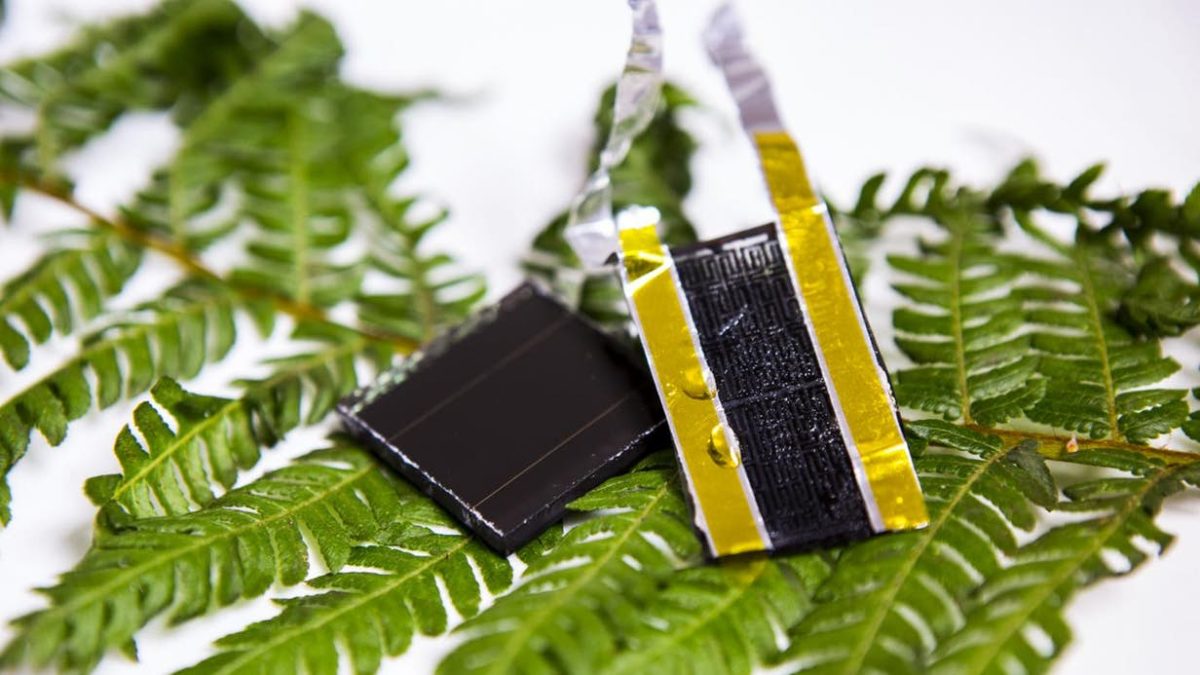A team from Melbourne Royal Institute Technology has developed a prototype Graphene electrode, which could allow all in one solar capture and storage. In China, meanwhile, scientists at Ocean University developed a solar cell which can store sunlight during the day, and continue to generate power after dark.
The Australian researchers were inspired by nature, drawing on the patterns known as ‘fractals’ seen in the leaves of an American fern as a solution to the challenge of filling a space in the most efficient way possible.
“The leaves of the western swordfern are densely creamed with veins, making them extremely efficient for storing energy and transporting water around the plant,” said RMIT’s Professor Min Gu. “Our electrode is based on these fractal shapes, we’ve used this naturally efficient design to improve solar energy storage at nano level.
The electrode is designed to work with supercapacitors, a storage solution which has previously been restricted by low capacities. The team at RMIT say their prototype electrode could increase their storage capacity by as much as 3000%
“Capacity boosted supercapacitors would offer both long term reliability and quick-burst energy,” continues Min Gu. “making them ideal alternatives for solar power storage.”
Lead author of the research, Litty Thekkekara pointed out that the prototype could have particularly exciting applications in combination with thin film technology. “The most exciting possibility is using this electrode with a solar cell to provide on chip energy harvesting and storage,” says Thekkekara. “With this prototype, we have solved the storage part of the challenge. Now the focus needs to be on flexible solar energy, so we can work towards achieving our vision of fully solar reliant, self- powering electronics.
All weather solar
At the same time, scientists at China’s Ocean University announced the development of an ‘all weather solar cell’ which can store sunlight during the day, and continue to generate power in the dark or poor light conditions.
According to Chinese news agency Xinhua, the cells are made from Long Persistent Phosphor (LPP), a luminescent material which can store sunlight and release it in darkness.
“Solar energy from unabsorbed visible and near-infra red light can be stored in LPP, releasing monochromatic visible light at night,” explains Tang Qunwei, Professor at the Ocean University of China. “The released light is reabsorbed to convert it into electricity, realizing persistent power generation in the day and in the dark.”
This content is protected by copyright and may not be reused. If you want to cooperate with us and would like to reuse some of our content, please contact: editors@pv-magazine.com.




By submitting this form you agree to pv magazine using your data for the purposes of publishing your comment.
Your personal data will only be disclosed or otherwise transmitted to third parties for the purposes of spam filtering or if this is necessary for technical maintenance of the website. Any other transfer to third parties will not take place unless this is justified on the basis of applicable data protection regulations or if pv magazine is legally obliged to do so.
You may revoke this consent at any time with effect for the future, in which case your personal data will be deleted immediately. Otherwise, your data will be deleted if pv magazine has processed your request or the purpose of data storage is fulfilled.
Further information on data privacy can be found in our Data Protection Policy.